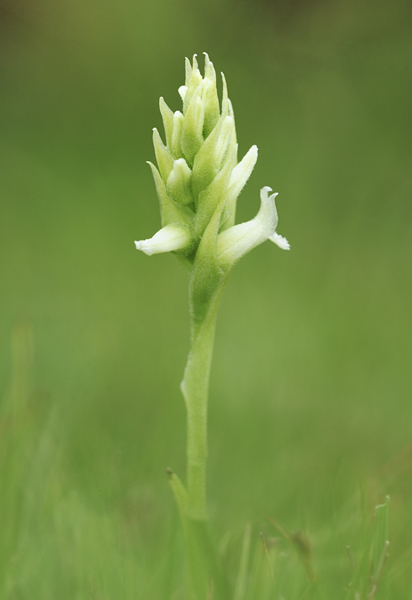The hunt for the Lady of Ireland’s Orchids
Irish Lady’s Tresses Spiranthes romanzoffiana
As we approach the end of the flowering season for native orchids in Ireland, The only remaining species to make an appearance are the Irish Lady’s Tresses Spiranthes romanzoffiana, which flowers in late July, and early August, and its relative, the Autumn Lady’s Tresses Spiranthes spiralis, which appears later in August, and early September.
The Irish Lady’s Tresses is by far, the most elusive of Irish orchids and local in its distribution in Ireland. It has been recorded mainly from the north and west of Ireland and only reliably most years in Northern Ireland from a single location in the Antrim glens. Most of the other sites in the north are unpredictable and in most cases plants have not been seen and confirmed in recent times.
This orchid has unpredictable flowering habits. Its presence at a site in one year is no guarantee that it will flower in the same location the following year.
It was first discovered in Ireland in the early nineteenth century in a potato field at Castletownbeare, County Cork. Its discovery in Northern Ireland was on the shores of the Lough Neagh basin in the early 1890’s. However, it has declined from many of its former haunts.
Outside Ireland, it is only known from western Scotland, even there it is local, with the most reliable locations being the Hebridean Islands, especially Barra and Bembecula.
This is a species that generally favors the marginal edges of lakes and wet pastureland, which are susceptible to episodic flooding. Although there has been a general decline from many of its former sites in the north, it appears to be spreading, with new locations reported from County Mayo and the lakeshore around Lough Allen in Counties, Leitrim and Roscommon.
I was particularly keen to find and update my photographs of this species, as I had not seen, or photographed it since the production of the “Orchids of Ireland”, which I co-authored with Tom Curtis. It’s also one of the most popular requested species from my library.
I was joined on this occasion with a few fellow orchid photographers and after a fairly steep assent into the surrounding hills near Carnlough, and some systematic searching, we located several plants, but not all of them were in full flower. The rather poor summer combined with the unseasonal conditions naturally has a knock-on effect on both flora and fauna, however; we were fortunate to find any at all.
Image above photographed through surrounding vegetation creating a soft focus effect.
The Lady is often a challenging species to photograph, even at most of its well-known locations. It usually grows among rank vegetation making it difficult to obtain relatively clutter-free backgrounds. I prefer to use a long focal length macro (200mm) in these situations and select an aperture that gives me the required “depth of field” to retain sharpness throughout the plant. I also pay particular attention to distracting bits of foliage in the foreground and background. Remember you are using open aperture viewing, so what you see through the viewfinder is not how the plant will look at the taking aperture. It’s always wise to check the depth preview button to see how the finished image will look; you can also usually spot any other distracting bits of foliage.
The conditions at the location were pretty wet, and the plants were rather small in comparison to those found at other sites in the Republic of Ireland. Photographing from a particularly low viewpoint helps the background immediately behind the plant by increasing the distance between the top of the flower and the background foliage. Adopting a higher viewpoint means using smaller apertures need to be considered and, retaining “depth of field” throughout the whole plant is a lot more difficult.


